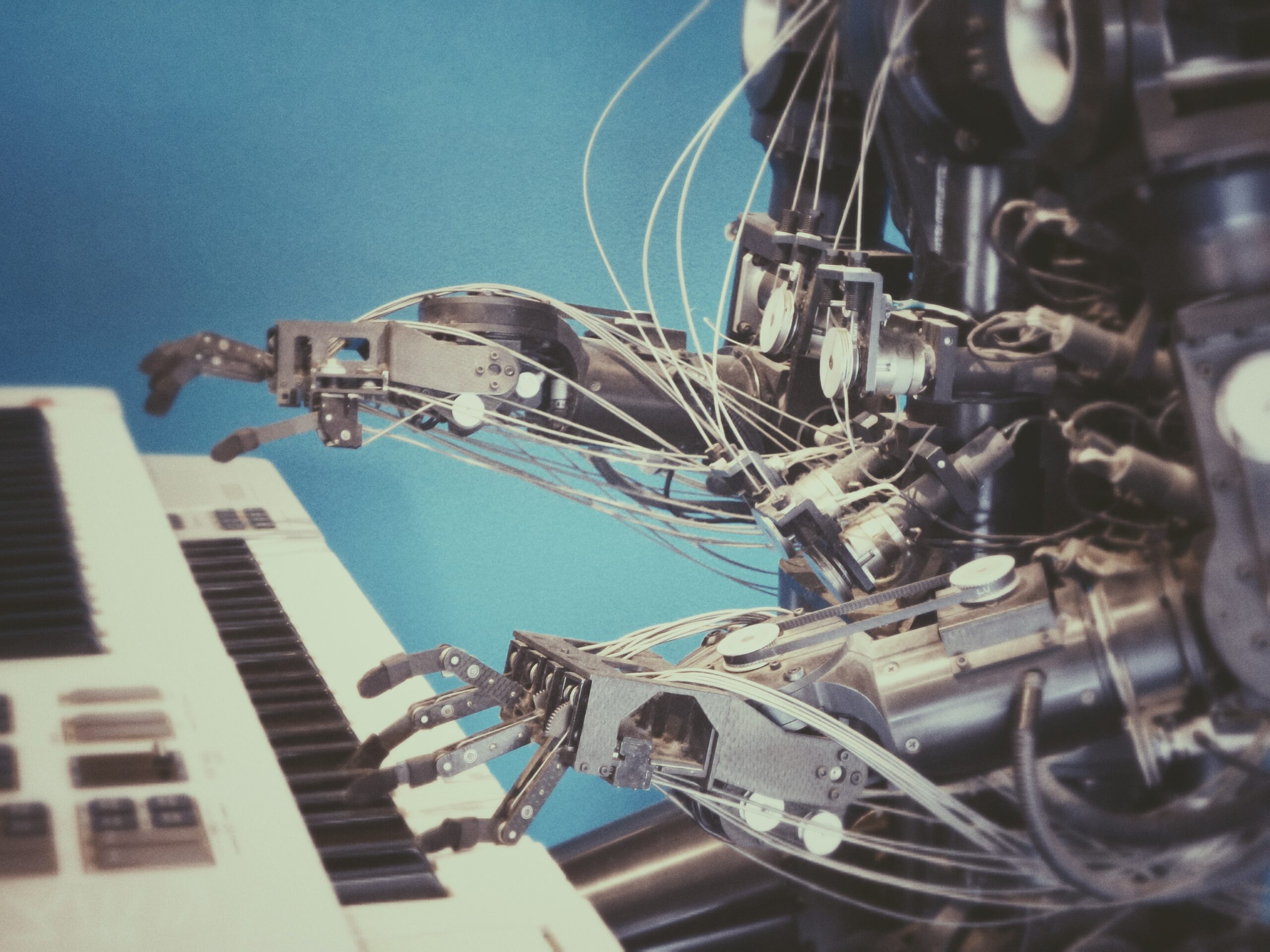Innovation drives progress in our rapidly evolving world. It fuels advancements in technology, medicine, and countless other fields. However, innovation also brings competition, and with it, the need to protect intellectual property. Patents are the cornerstones of this protection, and monitoring them is crucial for businesses seeking a competitive edge. But how can companies keep tabs on the ever-expanding patent landscape efficiently and effectively? The answer lies in the transformative power of Artificial Intelligence (AI). In this in-depth exploration, we’ll delve into the fascinating world of AI’s role in patent monitoring and surveillance.
Understanding Patents
Before we dive into the AI revolution, let’s first understand what patents are and why they are vital in today’s innovation-driven world.
A patent is a legal document that grants inventors exclusive rights to their inventions. It prohibits others from making, using, or selling the patented invention for a specific period, typically 20 years. Patents serve as incentives for innovation by offering inventors protection and a competitive advantage.
There are three main types of patents:
- Utility Patents: These cover new and useful processes, machines, manufactures, or compositions of matter. Utility patents are the most common type and are often associated with technological innovations.
- Design Patents: Design patents protect the ornamental design or aesthetics of a functional item. They are crucial in industries where product appearance matters, such as fashion and consumer electronics.
- Plant Patents: Reserved for inventors who have discovered and asexually reproduced distinct and new plant varieties. This type of patent encourages advances in agriculture and horticulture.
Now that we have a firm grasp of what patents entail, let’s move on to the traditional methods of patent monitoring.
Traditional Patent Monitoring Methods
Historically, patent monitoring involved manual searches, expert consultation, and keyword-based searches. While these methods have their merits, they come with inherent limitations and challenges. Manual searches involve combing through patent databases and documents one by one to identify relevant patents. This method is incredibly time-consuming, often leading to missed opportunities and delayed responses to emerging trends. Bringing in patent experts can be effective but expensive. Relying solely on human expertise can also lead to human error and a lack of scalability.
Keyword-based searches, while quicker than manual searches, are limited by the accuracy of selected keywords. They may overlook relevant patents that use different terminology or phrasing.
Given these limitations, it’s evident that traditional patent monitoring methods are ill-suited for the fast-paced, data-rich landscape of modern innovation. This is where AI steps in. Artificial Intelligence has ushered in a new era in patent monitoring and surveillance. It’s not just about speed and efficiency; AI brings unprecedented capabilities to the table.
AI-Driven Patent Search Engines
AI-driven patent search engines, such as IBM’s Watson, Google Patents, and PatSnap, utilize Natural Language Processing (NLP) and machine learning algorithms to analyze and categorize patent documents. These engines can quickly sift through vast patent databases and provide highly relevant results.
The beauty of these systems lies in their ability to understand context. They don’t rely solely on keywords; instead, they comprehend the content and context of patent documents. This semantic understanding enables them to identify patents that might be relevant even if they don’t contain the exact keywords initially searched for.
AI-powered patent search engines offer several benefits. AI can process and analyze thousands of patents in seconds, a task that would take humans weeks or even months. This rapid turnaround time is invaluable in a world where innovation moves at breakneck speed. AI eliminates the risk of human error in patent monitoring. It ensures that no patent is overlooked or misclassified due to manual oversight.
AI systems can provide real-time updates on newly published patents related to specific areas of interest. This proactive approach empowers businesses to stay ahead of the competition and respond quickly to emerging technologies.
Natural Language Processing (NLP) in Patent Analysis
NLP is a subset of AI that focuses on teaching computers to understand and generate human language. In the context of patent analysis, NLP helps extract valuable insights from patent texts.
NLP-powered algorithms can:
a. Summarize Patent Documents: NLP algorithms can distill lengthy and complex patent documents into concise summaries. This simplifies the process of understanding a patent’s key points and relevance.
b. Identify Prior Art: One of the critical aspects of patent analysis is identifying prior art. NLP can efficiently locate patents or publications that predate the patent in question and may challenge its novelty.
Machine Learning Algorithms for Patent Classification
Machine learning models are employed to classify patents into specific technology domains or categories. These models use historical patent data to learn and recognize patterns, which allows for accurate classification.
Machine learning-based classification offers several advantages. As the volume of patents continues to grow, machine learning models can adapt and handle the increasing workload without a corresponding increase in human resources. Machine learning models can improve over time as they encounter more patent data, becoming more accurate and efficient with each iteration.
AI-Powered Image Recognition for Design Patents
Design patents protect the ornamental aspects of a product. While textual analysis is crucial for utility patents, AI has also made strides in recognizing and analyzing visual elements through image recognition algorithms.
AI-powered image recognition can:
a. Identify Similar Designs
By comparing design patent drawings or images, AI can identify similarities between patented and potentially infringing designs, helping companies protect their unique product aesthetics.
b. Streamline Searches
AI can streamline searches for design patents by allowing users to upload images or sketches, thus bypassing the need for text-based queries.
With these advancements in AI, companies are not only able to conduct efficient patent searches but also gain deeper insights into the patent landscape. AI’s ability to understand patent documents and classify them accurately is a game-changer in the field of patent monitoring.
Benefits of AI in Patent Monitoring and Surveillance
The adoption of AI in patent monitoring and surveillance yields a multitude of benefits that go beyond mere efficiency.
Increased Efficiency and Accuracy
The most immediate and apparent advantage of AI is the significant boost in efficiency and accuracy. With AI-powered systems, patent monitoring tasks that once took weeks or months can be completed in minutes. Moreover, the risk of human error is virtually eliminated, ensuring that no relevant patents slip through the cracks.
Cost Savings and Resource Optimization
While the initial investment in AI systems and training may seem substantial, the long-term cost savings are undeniable. AI eliminates the need for extensive manual labor and reduces the reliance on costly patent professionals. Companies can allocate resources more efficiently, directing their human workforce towards higher-value tasks.
Real-time Monitoring and Alerts
AI’s ability to provide real-time updates and alerts is invaluable in a world where innovation races ahead at an unprecedented pace. Companies can stay on the cutting edge by promptly identifying new patents in their field and responding strategically.
Enhanced Competitive Intelligence
AI doesn’t just help in monitoring your own patents; it can also provide insights into the patent activities of competitors. By analyzing the patent landscape comprehensively, businesses can identify emerging trends, assess the competitive landscape, and adjust their strategies accordingly.
Global Patent Coverage and Language Support
AI-powered patent search engines can handle a multitude of languages and jurisdictions. This global reach ensures that companies can monitor patents not only in their home country but also in international markets, opening up new avenues for innovation and expansion.
Challenges and Concerns
While AI offers substantial advantages, it also presents challenges and concerns that must be addressed.
Data Privacy and Security
The use of AI in patent monitoring involves handling vast amounts of sensitive data. Protecting this data from breaches and ensuring compliance with data privacy regulations is paramount. Companies must implement robust security measures and data encryption protocols.
Patent Quality and Accuracy
AI systems are only as good as the data they are trained on. Low-quality or inaccurate patent data can lead to incorrect results and conclusions. Continuous efforts to improve the quality and accuracy of patent databases are essential.
Ethical Considerations in AI Patent Monitoring
The use of AI in patent monitoring raises ethical questions, especially concerning the potential for biased algorithms or the unintentional discrimination of inventors from certain demographics or regions. It is crucial to develop AI systems that are fair and unbiased.
Legal Implications and Patent Infringement Risks
Automated patent monitoring can sometimes lead to false positives, where a patent is wrongly identified as a potential infringement. This can result in legal disputes and wasted resources. Companies must have robust processes for reviewing and verifying AI-generated alerts.

Implementing AI in Patent Monitoring
Now that we understand the benefits and challenges of AI in patent monitoring, let’s explore how businesses can implement AI effectively. The first step is selecting AI tools and software that align with your organization’s needs and goals. Consider factors such as the size of your patent portfolio, the complexity of your technology, and your budget. AI should complement, not replace, existing patent management systems. Integration is key to ensuring a seamless workflow. AI tools should be able to import and export data to and from your existing systems.
While AI systems are becoming more user-friendly, they still require training and expertise to use effectively. Invest in training programs to ensure your team can harness the full potential of AI. Resistance to AI adoption is not uncommon, especially in industries with long-standing practices. It’s essential to communicate the benefits of AI, provide adequate training, and involve key stakeholders early in the implementation process.
Future Trends in AI-Powered Patent Monitoring
AI’s role in patent monitoring is set to evolve further in the coming years. Here are some future trends to watch:
As AI technologies continue to advance, we can expect even more accurate and efficient patent monitoring tools. Machine learning models will become more sophisticated, enabling better categorization and analysis of patents. Blockchain technology can enhance the security and traceability of patent data. It can help ensure the integrity of patent records and prevent tampering or unauthorized access.
AI systems will evolve to not only identify existing patents but also predict future patent trends. By analyzing historical data and industry developments, AI can help businesses anticipate emerging technologies. Quantum computing holds the potential to revolutionize patent analysis by processing vast datasets at speeds unimaginable with classical computers. While it’s still in its infancy, its impact on patent monitoring could be profound.
Regulatory Landscape and Compliance
Understanding the regulatory framework surrounding AI in patent monitoring is crucial for businesses. Various countries have started to implement regulations and guidelines for AI applications, including those in intellectual property. Staying informed about these regulations is essential to avoid legal pitfalls.
To navigate the legal landscape effectively, companies should consult with legal experts specializing in AI and intellectual property law. Developing a compliance strategy is vital to ensure that AI-powered patent monitoring aligns with legal requirements.
AI’s role in patent monitoring and surveillance is transformative, offering businesses unprecedented efficiency, accuracy, and insights into the patent landscape. The benefits of AI-powered patent monitoring extend far beyond cost savings, empowering companies to make strategic decisions, protect their innovations, and stay competitive in a rapidly evolving world.
Embracing AI in patent monitoring is not just an option but a necessity for businesses seeking to thrive in the age of innovation. While challenges and ethical considerations exist, they can be addressed with the right strategies and ethical AI development practices.
As we look to the future, the continued advancement of AI and its integration with emerging technologies like quantum computing and blockchain promise even more exciting developments in patent monitoring. By staying informed, investing in the right tools, and fostering a culture of innovation, companies can harness the full potential of AI in patent monitoring and surveillance.
In the ever-evolving landscape of intellectual property, AI is the compass that points the way to innovation, protection, and success.
